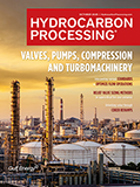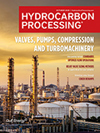Carbon capture tops agenda at GPAE Conference 2025
Carbon capture, storage and usage (CCUS) was high on the agenda as around 100 delegates gathered at the GPAE Conference 2025 in The Hague, Netherlands in early June.
During the three-day event, which featured technical presentations, workshops and panel discussions, specialists from across the value chain scrutinized the challenges and opportunities presented by CCUS, one of the key technologies at the heart of the energy transition in Europe.

The European Union is backing CCUS as one of its main tools to decarbonize industry. It has set a goal of 50 million tons per year of CO2 to be stored by 2030, rising to 280 million tons per year in 2040. With an eye on the next generations of engineers and specialists tasked with meeting thee goal, GPAE ‘s conference included meetings and presentations by its “Young Professionals” program.
One of the hard-to-abate industries in the process of deploying CCS at scale is the cement sector. Pavan Chilukuri, vice president/group head if CCUS at global cement company Holcim, used his keynotes address to the conference to outline his company’s strategy.
He stressed that emitters and project developers must look beyond the benefits of potential advances in capture technology when developing their business cases for the deployment of CCUS. Access to supportive government policies, and costs across the wider value chain are more important to the viability of decarbonization projects in hard-to-abate sectors.
Chilukuri said potential capital and operating savings from enhancements to capture technology could improve the business case for marginal projects, but they would not be enough to “unlock the business case”.
He cited the indicative cost of a CCUS project with a capacity of 1mt/yr of CO2. The capex and opex of the capture stage represents only half the cost of the total value chain, with the remaining half mostly accounted for by CO2 transport and storage. Even within the capture stage, the actual
capture cost was a small component, with costs for pre- and post treatment, liquefaction and temporary storage carrying more weight.
Alignment of the entire value chain in terms of timing and development is also crucial to projects reaching FID, Chilukuri said.
“I can have a very amazing capture plan design, but if the downstream transport and storage network is not ready to take an FID, then my product is going to be only on paper,” he said.
Chilukuri stressed the importance of government policy to the deployment of CCUS. “The main enabler for CCUS is a policy that pays for the decarbonization,” he told delegates. “The second enabler is the value chain and the third enabler is commercial innovation.”
He noted the importance of policy tools including the EU ETS and the EU’s Carbon Border Adjustment Mechanism to the viability of CCUS projects, as well as direct public funding being offered by the EU to support decarbonization.
Cost of capture. Leorelis Vasquez, senior process engineer at Worley Comprimo, presented a detailed analysis of CCUS costs in a technical paper entitled “Carbon Capture: An Integrated Solution.” The cost of carbon capture is said to be between $50/t and $600/t if direct air capture is included. A key factors to take into account when determining capture costs are the partial pressure or concentration of CO2 of the feed gas, Vasquez noted. Technology providers sometimes state energy use or carbon capture costs without providing the concentration of CO2 they are considering a project.
“This should not happen because it will be like comparing apples to pears when you look into a different CO2 concentration,” she said. “We cannot report carbon capture costs or energy use in carbon capture without referring to the partial pressure or concentration of CO2 of the feed gas that you are talking about.” The higher the CO2 partial pressure in the feed gas is, the lower the carbon capture costs. “I cannot stress this enough - I want that you leave this room with that message,” said Vasquez.
Roadmap or roadblock? Challenges in the transportation of both CO2 and hydrogen for the energy transition were further scrutinised during the conference’s showpiece panel discussion.
The session, moderated by Stuart Penson, managing editor at of Gulf Energy Information, was entitled “Roadmap or Roadblock – CO2 and Hydrogen Pipelines” and featured the following expertise speakers: Manohara Gudiyor, senior scientist, NPL Management; Peter van Elferen, project manager Gasunie; Thomas Fontfreyde, deputy country manager, upstream and transverse services manager, Genesis Energies; Thomas de Cazenove, senior engineer CO2 abatement deployment – SME CO2 processing and liquefaction, Shell.

A lively panel discussion, with additional comments and questions from the audience, covered multiple themes, including the challenges in designing CO2 collection networks from multiple emitters, and the pros and cons of using blending with natural gas, pure hydrogen and ammonia
and other derivatives for hydrogen transportation. Also discussed were the potential role of liquid as opposed to dense phase CO2 transport in pipelines.
Other technical presentations at the conference included a paper entitled “CO2 Conditioning – Design Challenges”. The paper, jointly presented by Tobias Eckardt, global technical expert gas purification, BASF Catalysts, and Myrian Schenk, senior engineering and technology manager, Baker Hughes, explored the impact of removing impurities during the purification stage versus dealing with them in transportation.
Even though CCS projects have been commissioned, there are no industry-wide agree specifications for treated CO2.
This analysis grouped impurities into three categories: non-condensable; corrosion inducing and reactive.
“One of the key findings was really that the reactive ones are sometimes underestimated in their impact,” said Eckard. “Defining the accurate level of these contaminants and also the depression of the contaminants in the various process steps is really key to coming up with an economic design.”






Comments